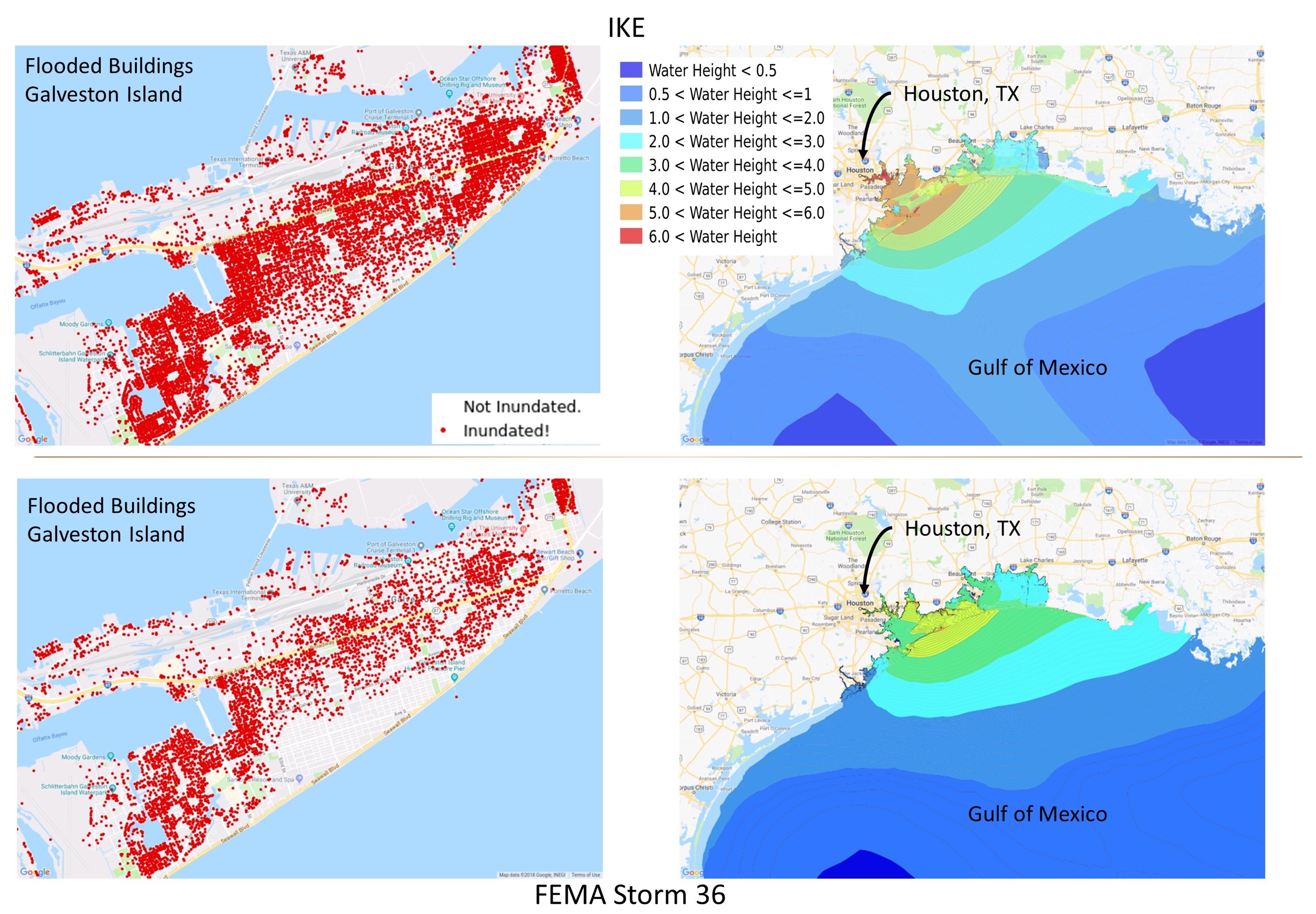New DesignSafe Tools for First Responders
Published on November 9, 2018

A new tool developed by the DesignSafe team integrates diverse datasets (simulation, elevation, addresses) from different technical domains and across a range of scales to help answer questions like: 'Did my home flood?'
DesignSafe's Reconnaissance Portal is key to enabling post-storm reconnaissance. And working with first responders on the front-lines of Hurricane Harvey inspired DesignSafe's developers to create new tools to assist first responders in the future.
Dan Stanzione, TACC's executive director and the principal investigator for DesignSafe, assisted decision-makers at the Texas State Operations Center during Hurricane Harvey.
"While there, a first responder said to me: I want to know a list of addresses in Houston that have been flooded above their electrical outlet height. You have a supercomputer, you can do that right?'" Stanzione recalled. "We weren't able to provide that assistance in the moment, but it inspired us to create such a tool."
The components required for such an analysis storm surge forecasts, elevation maps and home constructions records already existed. But the ability to connect these datasets and generate a list of potentially damaged homes in a reasonable amount of time did not.
In the months that followed, researchers on the DesignSafe team stitched together tools to integrate simulations and data across scales, from the entirety of the Gulf of Mexico to a particular stretch of coastline, and from individual neighborhoods to specific homes.
Using data from 2008's Hurricane Ike and from a hypothetical storm that FEMA uses for their research, the DesignSafe team showed that it is indeed possible to generate a list of potentially damaged addresses in real-time. In fact, all aspects of the process can be computed within DesignSafe, using TACC's massive supercomputers in the background.
"We can go from gulf-wide, large-scale HPC simulation to, Did this house flood or not?'" Stanzione said. "It's a long-time goal that was not technologically possible before, but that we've been able to get to. All of the data stays in the DesignSafe environment. The next step is determining how we can automate these workflows so they run automatically."
When the next storm hits, thanks to DesignSafe, first responders will have the information they need for quick action at their fingertips.
By Aaron Dubrow, Texas Advanced Computing Center







